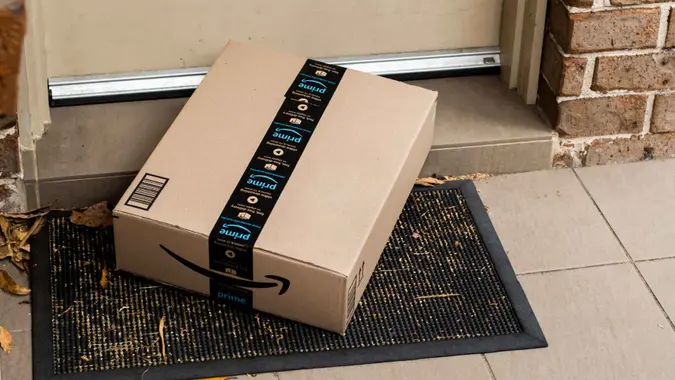I Asked ChatGPT How To Lower My Electricity Bill in the Summer: Here’s What It Said

Commitment to Our Readers
GOBankingRates' editorial team is committed to bringing you unbiased reviews and information. We use data-driven methodologies to evaluate financial products and services - our reviews and ratings are not influenced by advertisers. You can read more about our editorial guidelines and our products and services review methodology.

20 Years
Helping You Live Richer

Reviewed
by Experts

Trusted by
Millions of Readers
Electricity bills are skyrocketing around the U.S. this summer for a variety of reasons, from extreme weather to other economic factors and inflation. Depending on where you live, many Americans paid as much as 6.5% more for their electricity since last year, according to the U.S. Energy Information Administration (EIA).
While artificial intelligence (AI) data centers may also be contributing to increased prices, since these centers require tremendous energy to run, I thought, why not go to the source and ask AI how to solve this problem.
I started out by asking ChatGPT how to lower my electricity bill in the summer — though I didn’t give it a specific region or climate, so its first answers were generic.
General Ways To Lower Your Summer Electricity Bill
ChatGPT suggested that the following activities can potentially save money on energy in the summer no matter where you live:
- Use a Programmable or Smart Thermostat: If you set your temperature higher when you’re away and cooler only when you’re home, even a two- to three-degree increase can reduce cooling costs.
- Seal Air Leaks and Improve Insulation: Make sure you seal around doors, windows and attic spaces to keep cool air in and hot air out.
- Switch To LED Lighting: LEDs produce less heat and use far less energy than incandescent bulbs, and they last longer, too.
- Use Ceiling Fans Wisely: Fans make you feel cooler but don’t lower the room temperature — turn them off when you leave.
- Close Curtains and Blinds During the Day: Blocking out sunlight can reduce heat gain significantly, especially on south- and west-facing windows.
- Limit Heat-Generating Activities Midday: While most people don’t need to be told, especially in a hot climate, limit running ovens, clothes dryers and dishwashers to early in the morning or late at night to reduce heat and lower electricity costs.
- Maintain Your AC Unit: Clean or replace filters monthly and make sure vents are unobstructed for maximum efficiency.
Climate-Specific Tips
Now, climate makes a big difference in electricity tips, so I asked ChatGPT if it would modify any of its recommendations for specific climate areas in the U.S. Here is what it said:
Hot and Humid (Southeast, Gulf Coast)
- Use a Dehumidifier: Removing moisture from the air lets you raise the thermostat without feeling sticky.
- Install Reflective Window Film: This film reduces the heat gain of the sun without blocking natural light.
- Service HVAC More Frequently: Humid climates can strain systems faster, so make sure you check up on this hardworking equipment.
Hot and Dry (Southwest, Desert States)
- Evaporative Coolers (swamp coolers): These are a low budget way to stay cool but use less electricity than AC in dry climates.
- Night Ventilation: Open windows at night to bring in cooler air and flush out daytime heat.
- Shade Landscaping: Plant drought-tolerant trees or install shade sails to cool exterior walls.
Warm but Breezy (Coastal California, Pacific Northwest)
- Maximize Cross Ventilation: Open windows on opposite sides of the house during cooler hours.
- Delay AC Use: Many coastal areas can go most of the day without AC if shaded and ventilated properly.
- Lightweight Window Coverings: Sheer curtains can block glare while letting in ocean breezes.
Variable or Continental Summers (Midwest, Northeast)
- Window AC Optimization: Only cool occupied rooms instead of the whole house.
- Weatherstrip Seasonally: Summer sealing can keep humidity and heat out.
- Basement Cooling: Spend more time in naturally cooler lower levels to reduce AC demand.
Solutions for Data Center Usage
While these are all great solutions for the average individual user, they don’t address the issue of extreme energy usage of powering AI. And the irony is not lost on me that I’m part of the problem in asking AI to solve this problem, but if that’s not a great use of the technology, what is?
Here are some solutions ChatGPT proposed:
‘Power‐Coupling’ Data Centers With Renewable Energy
ChatGPT pointed to an effort at the Rocky Mountain Institute (RMI) that proposes “co-locating data centers with new renewable energy sources and existing gas plants.” This “power-couple” setup could help meet high AI-driven demand without delaying grid expansions — reducing the need to pass costs onto consumers.
Mandated Energy Efficiency Standards and Transparency
In California and other states, ChatGPT shared that lawmakers are considering regulations that enforce “energy-use transparency, impose efficiency standards and create rate structures targeted at large-scale data centers.” The goal is to protect taxpayers from subsidizing these centers.
Advanced Efficiency Technologies
Companies like Amazon, Google and Meta are attempting to mitigate energy usage by deploying technologies “such as liquid cooling, AI-driven optimization and more efficient hardware to reduce power usage per computation,” ChatGPT shared. While promising, it’s not likely enough to curb overall consumption.
Smart Workload and Grid Scheduling
Lastly, ChatGPT shared that efforts in “demand flexibility and grid-aware scheduling” could allow data centers to align their operations with renewable energy availability and grid demand, ultimately reducing waste and lowering strain on the system.
 Written by
Written by  Edited by
Edited by 

























